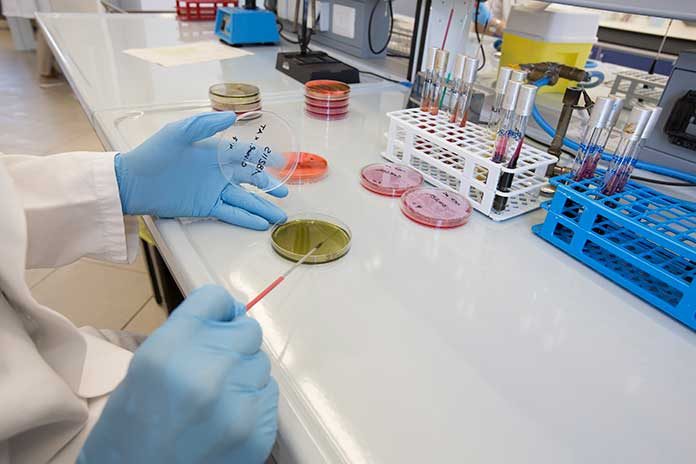
Multiple factors can influence both Salmonella prevalence and diversity of Salmonella serogroups detected from both pre and post-harvest samples. Sampling methodologies vary widely when sampling the environment, individual live birds, carcasses, and parts. Furthermore, protocols for analyzing the samples following collection can also impact both prevalence and serogroup diversity.
With more than 2,400 serotypes, it is reasonable to expect that different Salmonella serotypes will have differing abilities to grow and compete in different environments such as dust vs. litter vs. ceca. Even different isolates of the same serotype can have a greater or lesser ability to colonize birds. Differing abilities of certain serogroups to grow during cultivation may impact which serogroups are recovered. However, those serogroups recovered may not be representative of the serogroups present in the original sample.
Salmonella prevention strategies
Prevention of Salmonella in ready-to-cook broiler meat products begins at the breeder and broiler farms. High levels of biosecurity are important to prevent introducing Salmonella to the flock. This should include preventing contamination by sanitizing equipment entering and leaving the farm such as vehicles, tools, boots and clothing. Poultry houses should be managed to prevent entrance of birds and maintain rodent and insect control. Other methods of on-farm prevention include vaccination. Live vaccines can give good immunity protection for Salmonella Enteritidis, Heidelberg, and Typhimurium. Before the birds are caught for transport, adequate feed and water withdrawal times between 8-12 hours are needed. If feed withdrawal is too short, there will be greater fecal contamination at the plant. If feed withdrawal is too long, there may be more intestinal breakage during evisceration. The ability of the processing plant to minimize pathogens on the final product is heavily dependent on the levels of pathogens on and in the birds when they enter the plant. Once the birds arrive at the plant the focus becomes decreasing the levels of bacteria on the carcass throughout the process. This is achieved by methods such as physical separation of kill lines and evisceration lines, counter flow movement of water in scalders and chillers, and use of antimicrobial processing aids to decrease bacterial levels, minimize cross contamination, and keep equipment clean.
Influences of sample method collection
When testing a flock, house, carcass, or other sample for the presence of pathogens, the method of sample collection and can affect results. Prevalence and serotype diversity are affected by sample type, sample incubation method, microbiological media and culture bias. In a study comparing environmental and ceca samples, the highest Salmonella prevalence was found in ceca and feed, however, the serotypes identified were vastly different. Work comparing serotypes found in an integrated broiler system demonstrated that Salmonella Enteritidis persisted through the breeders, hatchery, broilers, and the processing plant, while other serotypes appeared at a single stage of the system.
After the sample has been collected, the protocol used for analysis can affect prevalence and serotype diversity. Sample incubation method (e.g. with or without tissue) impacts Salmonella prevalence and diversity. When neck skins, whole carcass rinses, and whole carcass enrichments were compared, both prevalence and serogroup were significantly impacted by sample type. In a study comparing common selective enrichment media, prevalence results ranged from 18.0% to 97.4% positive results from the same meat sample. Culture bias can also impact which serogroup is recovered following incubation. In a study starting with equivalent levels of Newport, Enteritidis and Typhimurium, Newport outcompeted both Enteritidis and Typhimurium. This work indicates that results obtained following sample analysis may not be indicative of what was originally present on the sample.
Salmonella prevention strategies should be practiced throughout the entire integrated process in an effort to minimize entrance into the processing plant. Furthermore, sampling and analysis methods have significant impacts on prevalence and serotype results and should be considered when developing a surveillance plan.

















